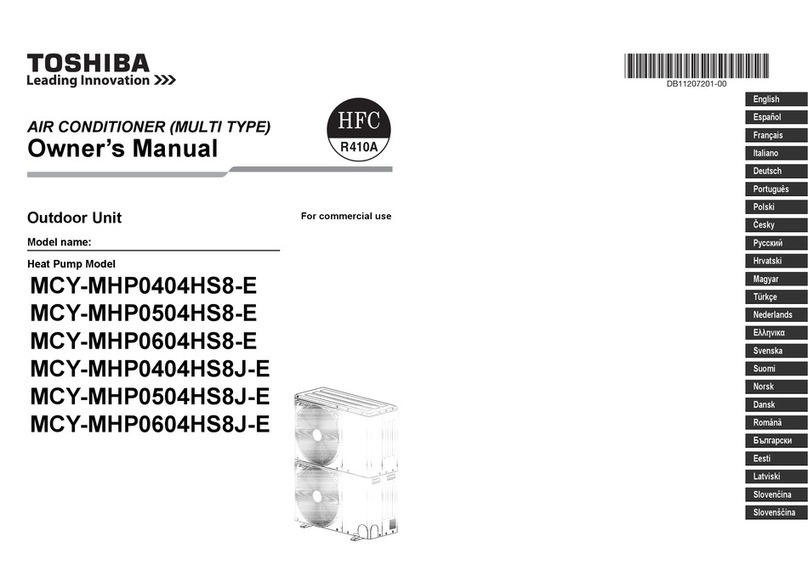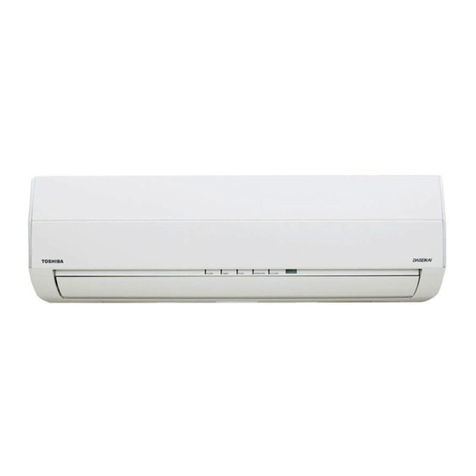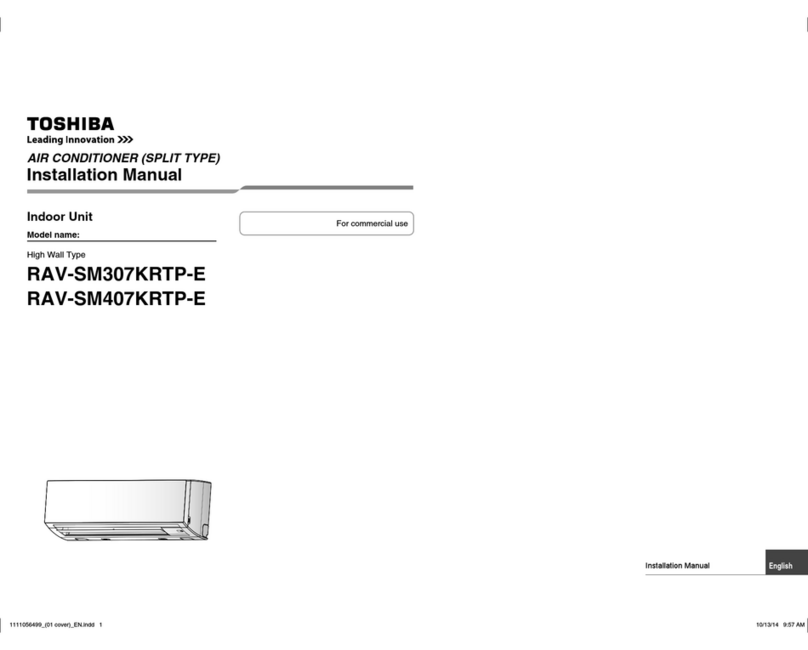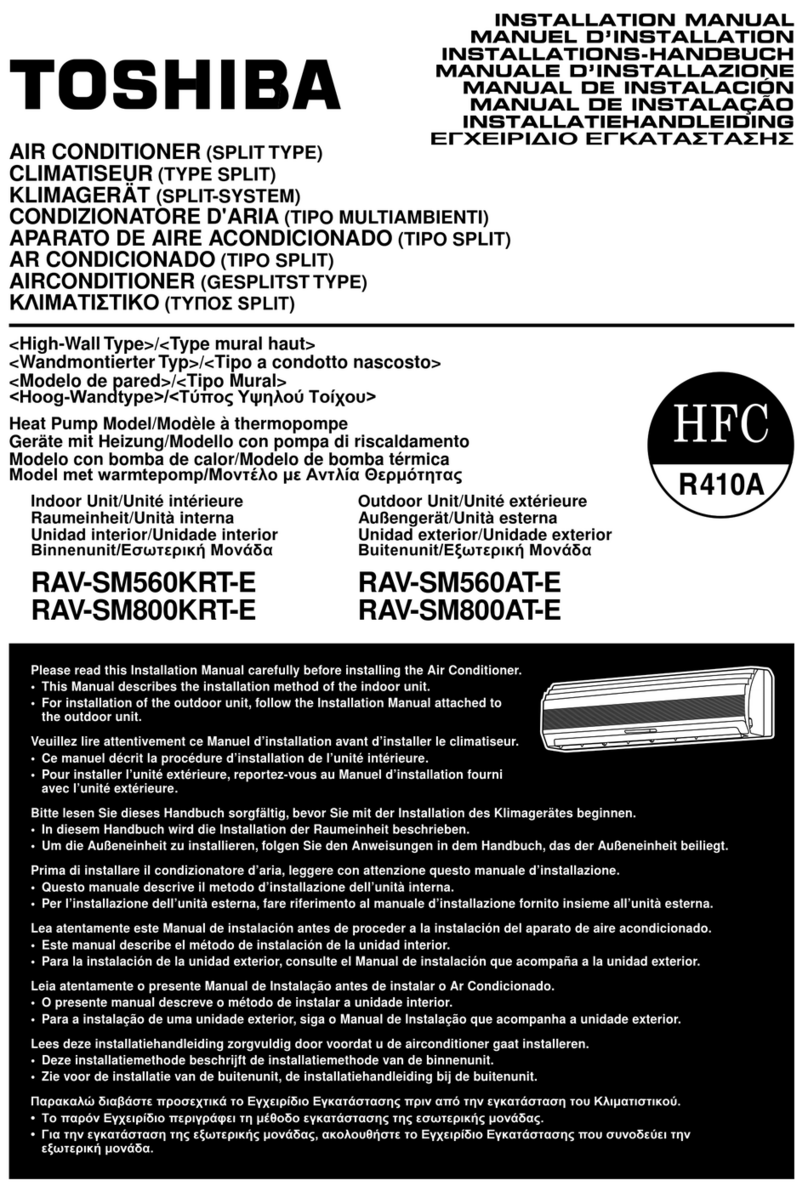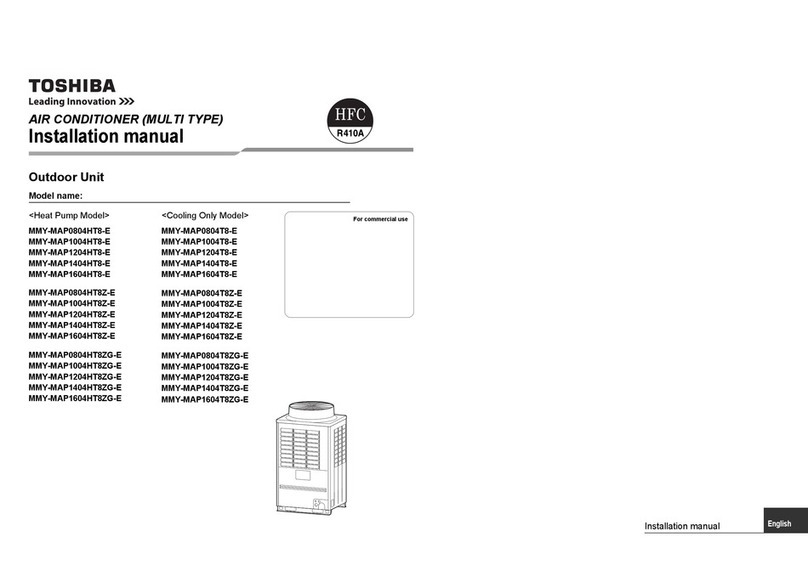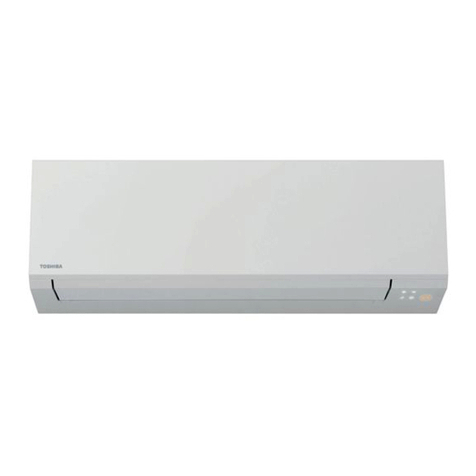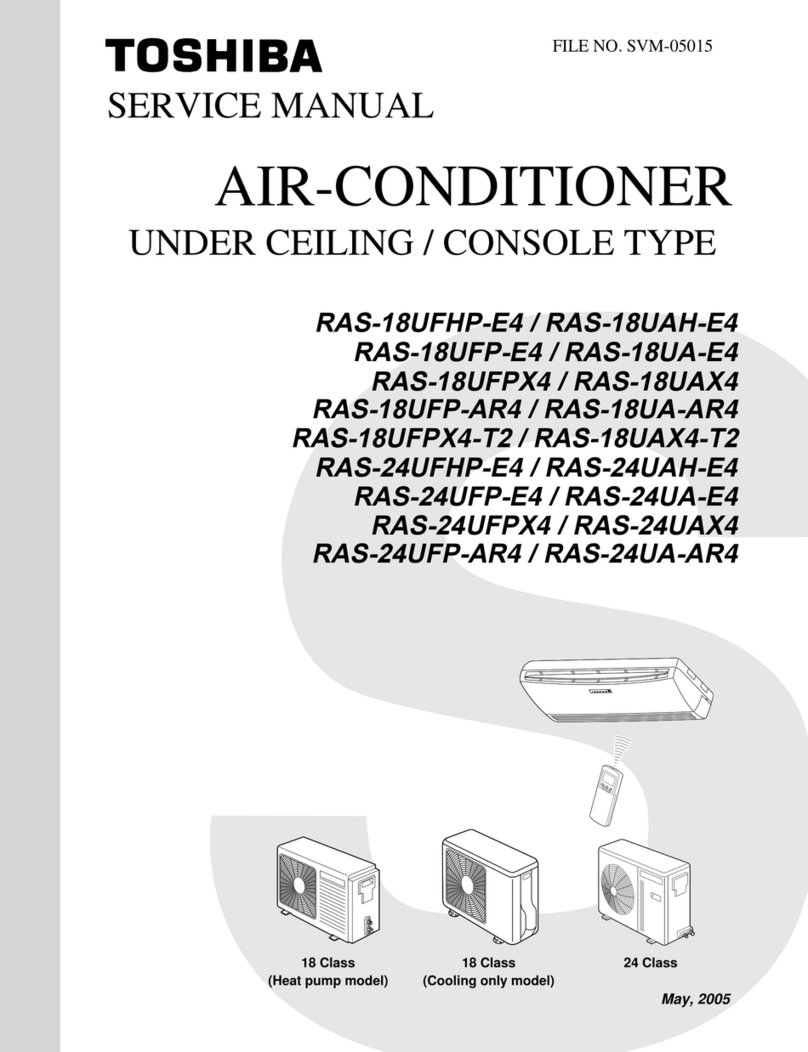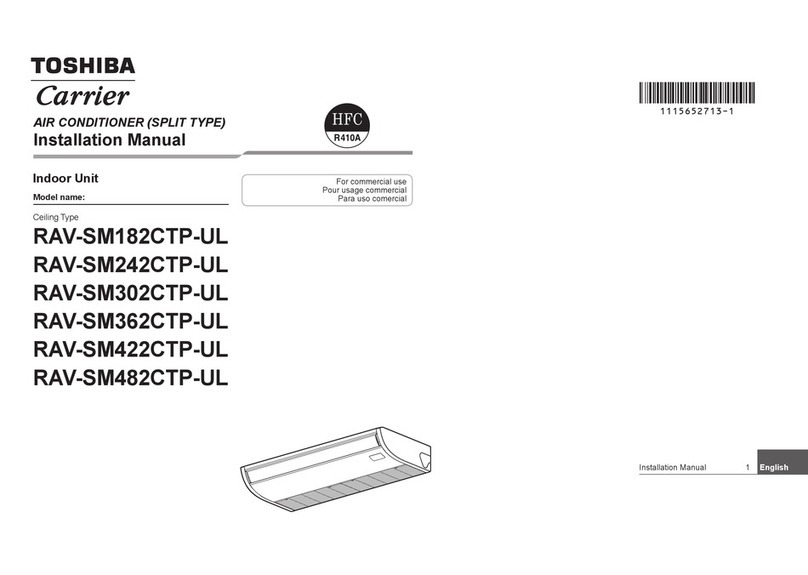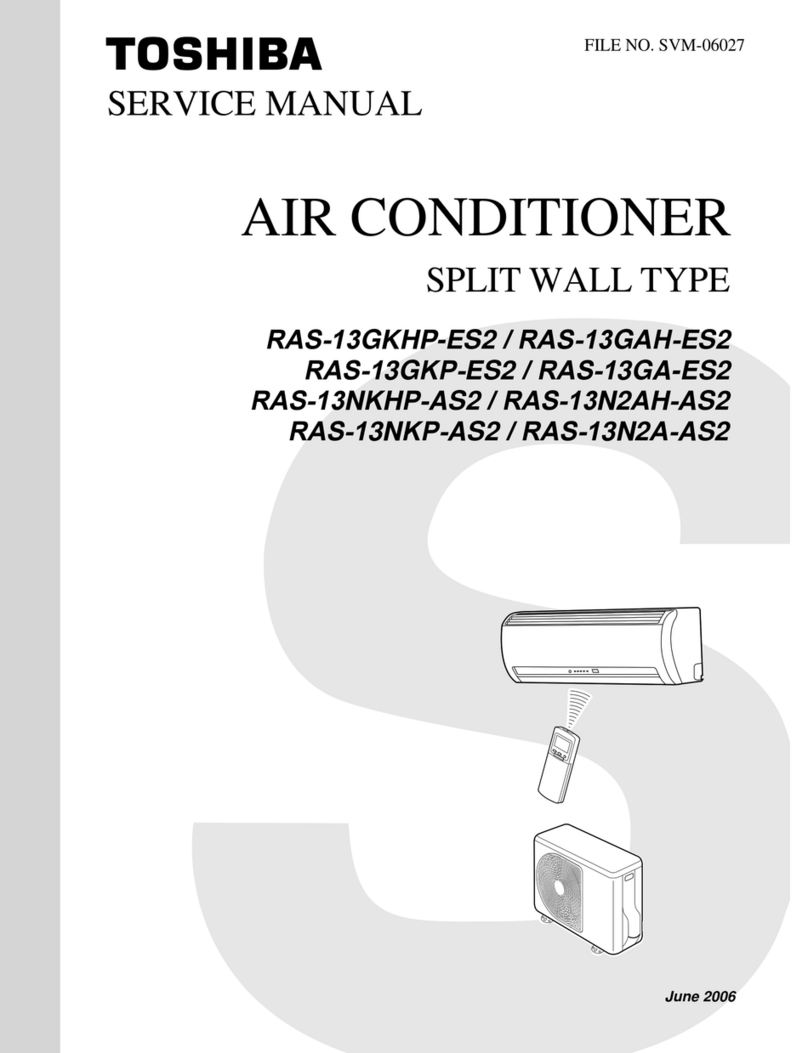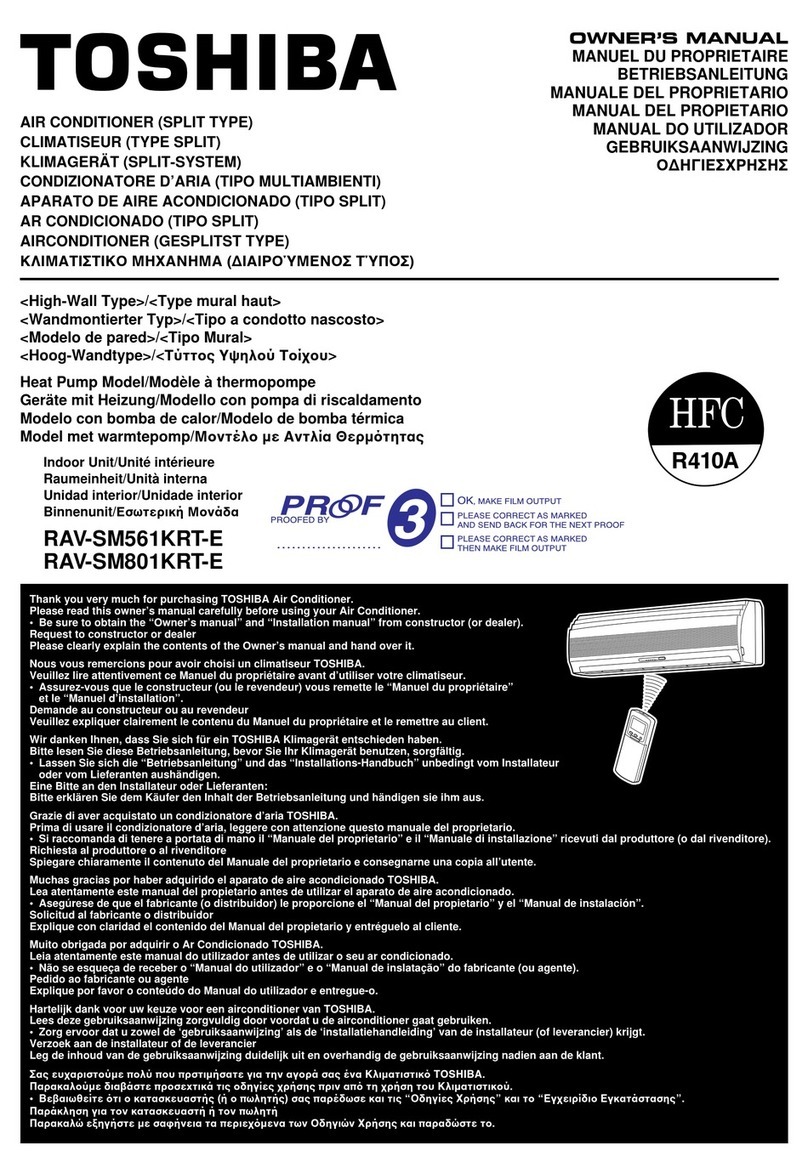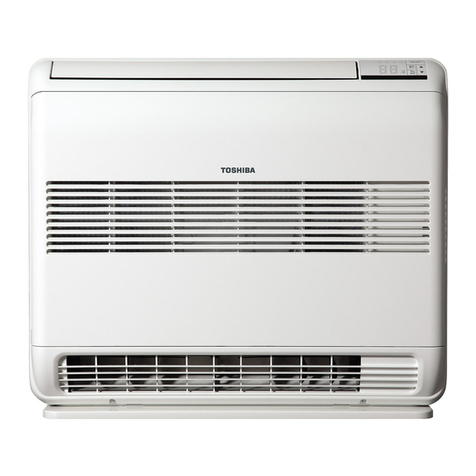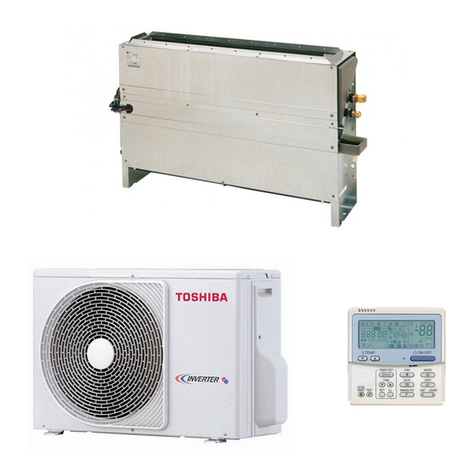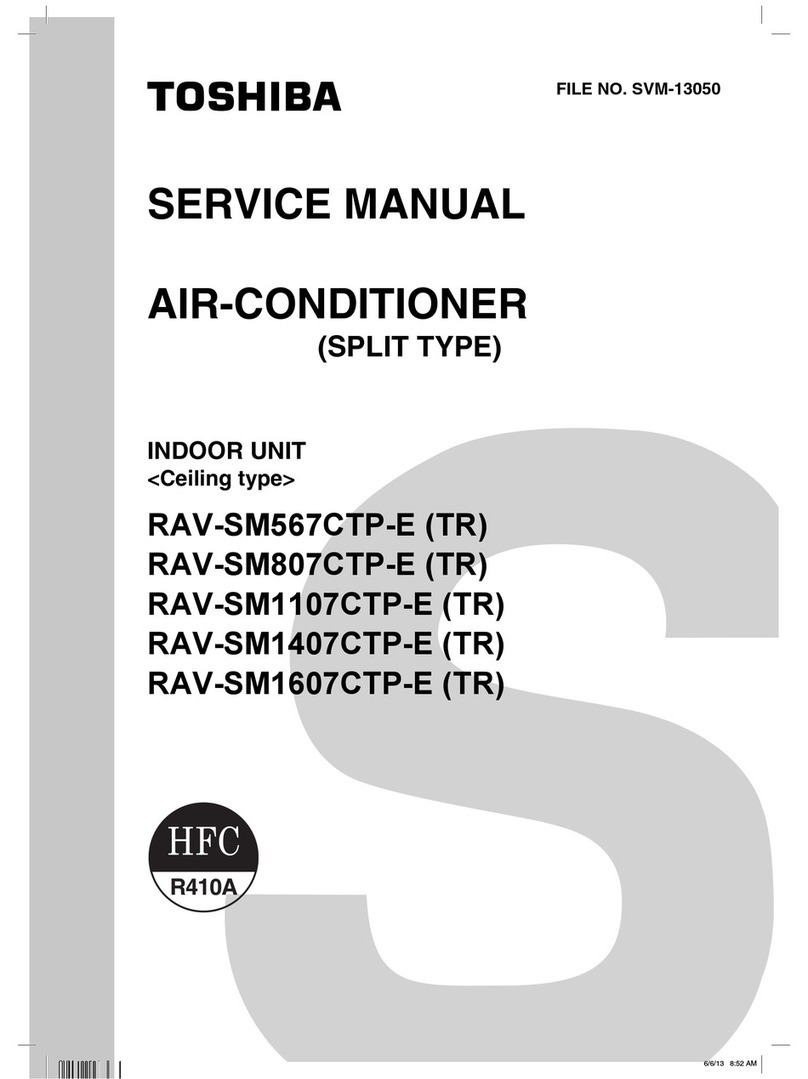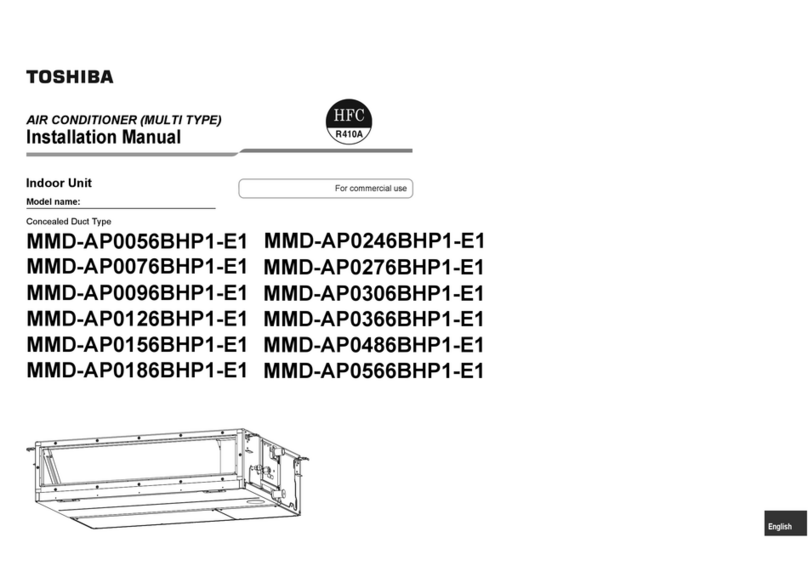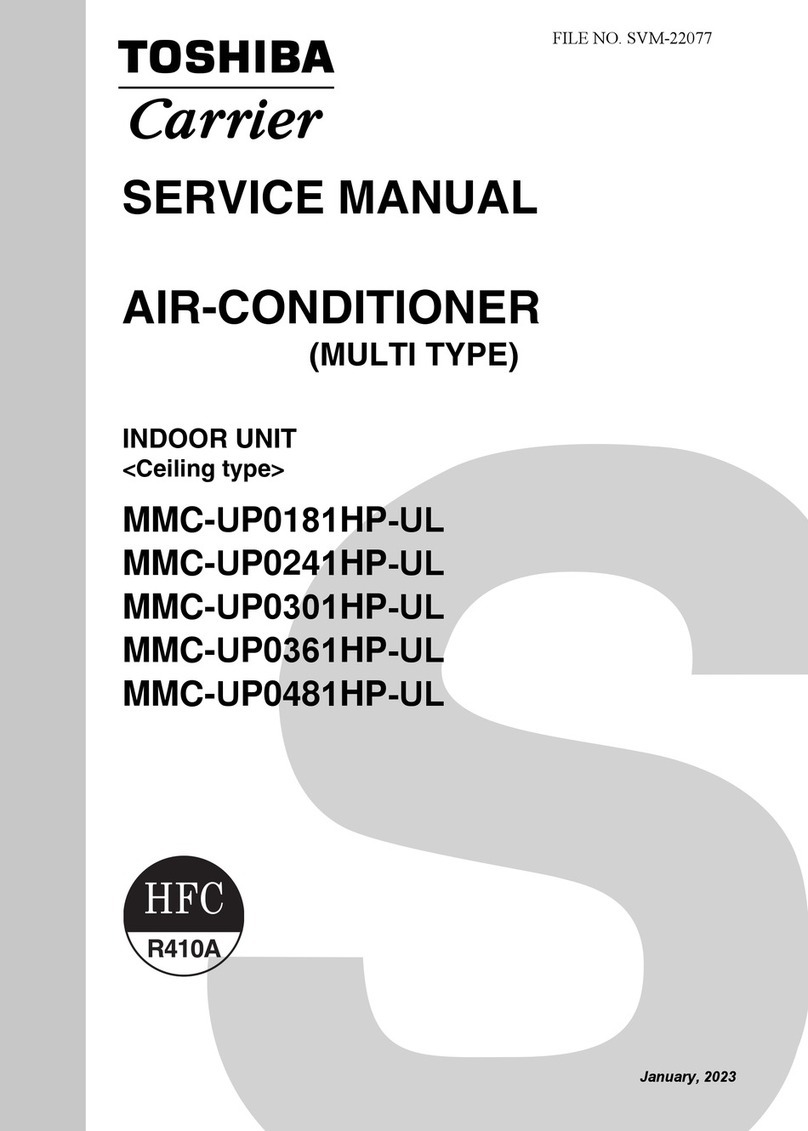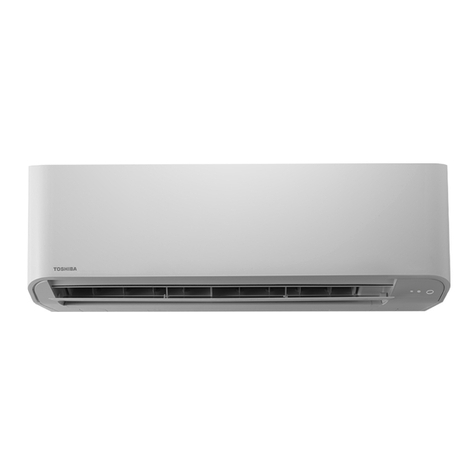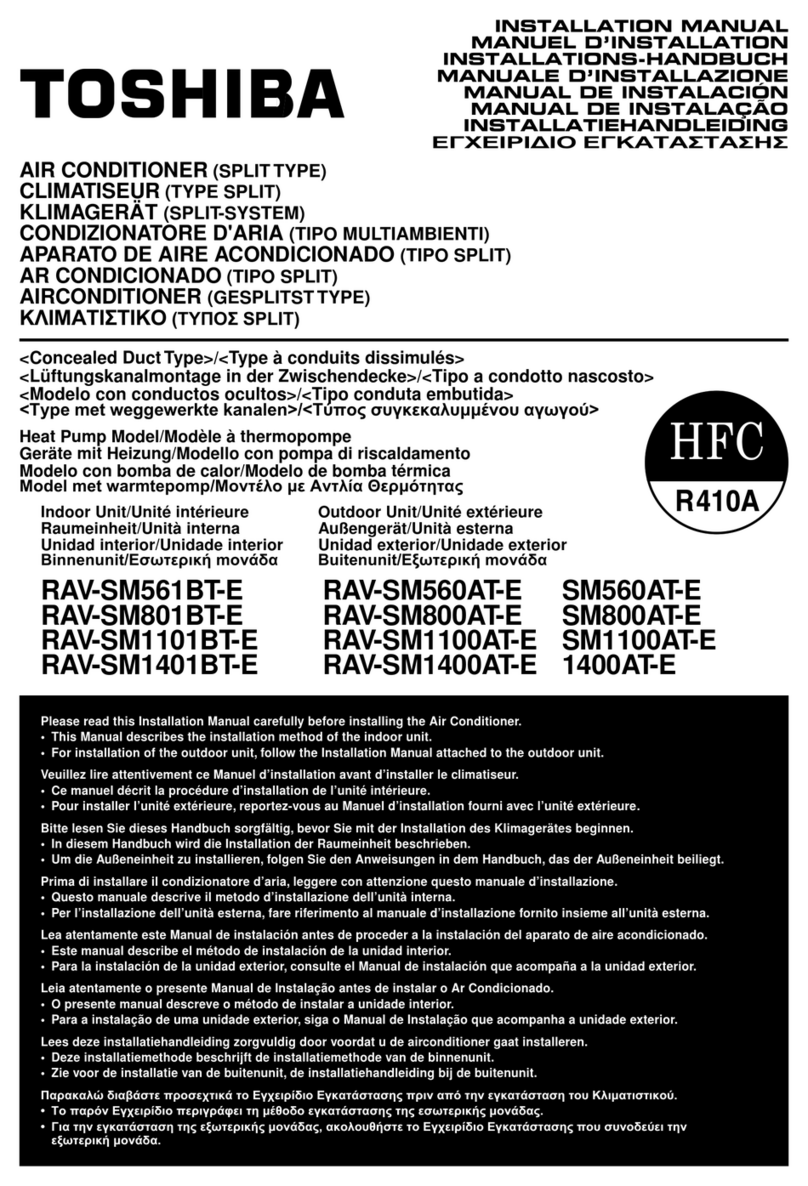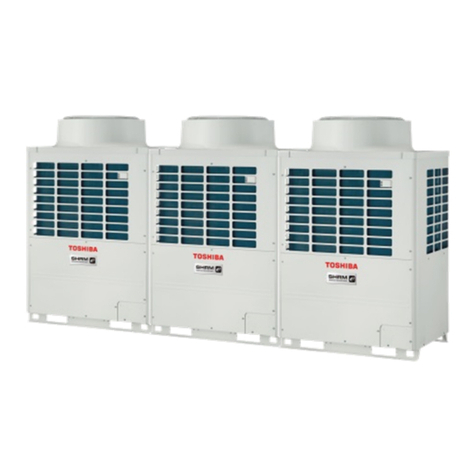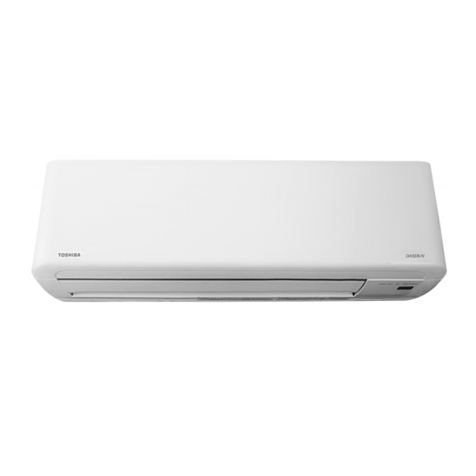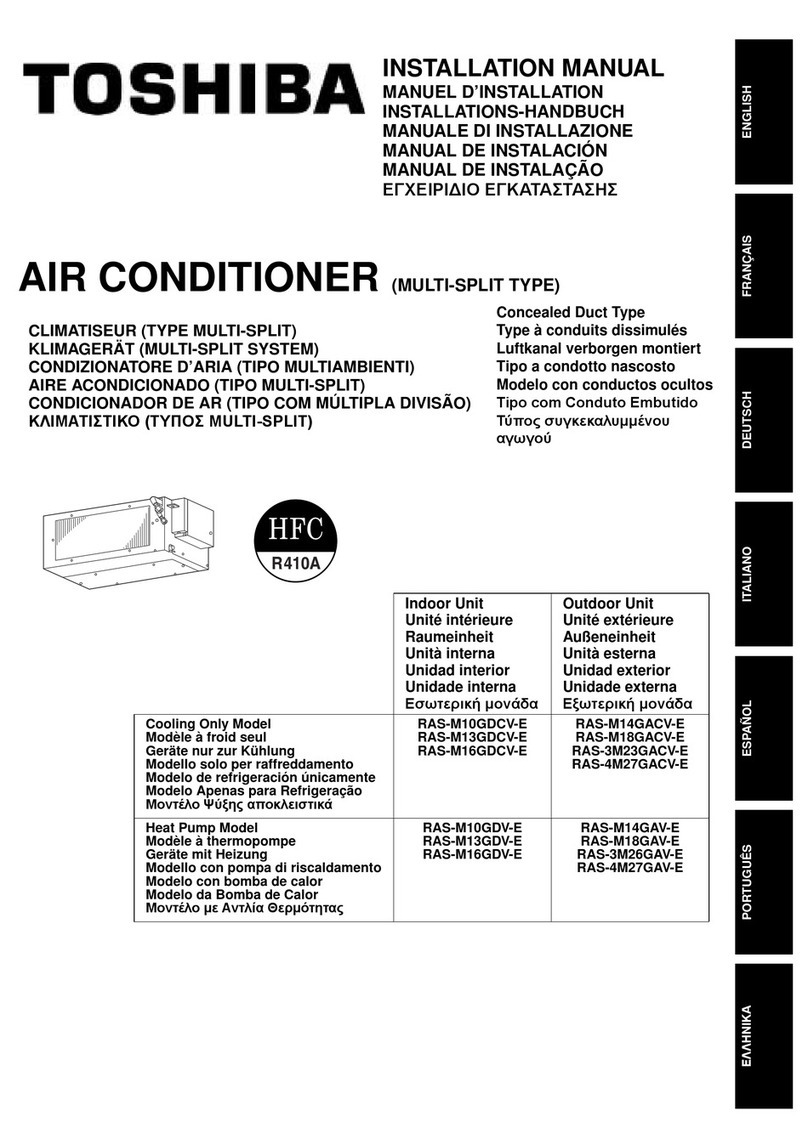
EN
PRECAUTIONS FOR SAFETY ..............................................1
ACCESSORY PARTS ............................................................4
INSTALLATION DIAGRAM OF INDOOR AND
OUTDOOR UNITS ..................................................................5
Optional Installation Parts .................................................5
INDOOR UNIT ........................................................................6
Installation Place ...............................................................6
CuttingaHoleandMountingInstallationPlate.................6
PipingandDrainHoseInstallation....................................6
IndoorUnitFixing..............................................................7
Drainage ...........................................................................7
OUTDOOR UNIT ....................................................................8
Installation Place ...............................................................8
PrecautionsaboutInstallationinRegionswithSnowfall
andColdTemperatures.....................................................8
DrainingtheWater............................................................9
RefrigerantPipingConnection..........................................9
Evacuating.......................................................................10
ELECTRICAL WORKS ........................................................11
WiringConnection...........................................................11
PowerSupplyandConnectingCableConnection..........12
PowerSupplyInputWiringDiagram...............................13
OTHERS ...............................................................................14
GasLeakTest.................................................................14
RemoteControlA-BSelection........................................14
TestOperation.................................................................14
AutoRestartSetting........................................................14
APPENDIX ...........................................................................15
RU
MEPЫ БEЗOПACHOCTИ .....................................................1
ДОПОЛНИТЕЛЬНЫЕ ДЕТАЛИ ............................................5
СХЕМА УСТАНОВКИ ВНУТРЕННЕГО И НАРУЖНОГО
БЛОКОВ .................................................................................6
OпционaльныeУcтaновочныeЧacти.............................6
BHУTPEHHИЙ БЛOК ............................................................7
MecтоУcтaновки .............................................................7
ПpоpeзaниeОтвepcтияиМонтaжУcтaновочной
Плacтины
..........................................................................
7
УcтaновкaTpyбопpоводовиДpeнaжнойTpyбки...........8
УcтaновкaBнyтpeннeгоБлокa........................................9
Дpeнaж..............................................................................9
HAPУЖHЫЙ БЛOК ...............................................................9
MecтоУcтaновки..............................................................9
Мерыбезопасностиприустановкеврегионах,
вкоторыхвозможновыпадениеснегаинизкие
температуры....................................................................9
Сливводы.......................................................................10
ПодcоeдинeниeTpyбопpоводaдляXлaдaгeнтa..........10
УдaлeниeВоздyxa..........................................................11
ЭЛEКТPОМОНТAЖНЫE РAБОТЫ ...................................12
ЭлeктpичecкиeCоeдинeния.........................................12
Подключениеисточникапитанияисоединительного
кабеля
............................................................................
13
Схемаэлектрическихсоединений...............................14
ДPУГИE ................................................................................15
ПpовepкaОтcyтcтвияУтeчкиГaзa...............................15
ВыборА-ВнапультеДУ.................................................15
ПpобнaяЭкcплyaтaция..................................................15
УcтaновкaAвтомaтичecкогоПовтоpногоПycкa...........15
ПРИЛОЖЕНИЕ ....................................................................16
TR
GÜVENLİK ÖNLEMLERİ .......................................................1
AKSESUAR PARÇALARI ......................................................4
İÇ VE DIŞ ÜNITENIN MONTAJ ŞEMASI ...............................5
İsteğeBağlıMontajParçaları............................................5
İÇ ÜNİTE ................................................................................6
MontajYeri........................................................................6
BirDelikAçılmasıveMontajPlakasınınYerleştirilmesi.....6
BorularınBağlanmasıveBoşaltmaHortumununMonte
edilmesi.............................................................................6
İçÜniteninTakılması.........................................................7
SuBoşaltma......................................................................7
DIŞ ÜNİTE ..............................................................................8
MontajYeri........................................................................8
KarlıveSoğukBölgelerdeMontajİleİlgiliÖnlemler.........8
SuTahliyesi.......................................................................9
SoğutmaMaddesiBoruBağlantısı...................................9
Boşaltma..........................................................................10
ELEKTRİK İŞLERİ ...............................................................11
KabloBağlantısı..............................................................11
GüçKaynağıveBağlantıKablosuBağlantısı..................12
GüçKaynağıgirişiKabloŞeması...................................13
DİĞERLERİ ..........................................................................14
GazKaçağıTesti.............................................................14
UzaktanKumandaileA-BSeçimi...................................14
Testİşlemi.......................................................................14
OtomatikYenidenBaşlamaAyarı....................................14
EK .........................................................................................15
1122950109_S04_182x257_52p_S_p70_181217_EN+TR+RU.indd 2 12/25/2018 10:46:49 AM

